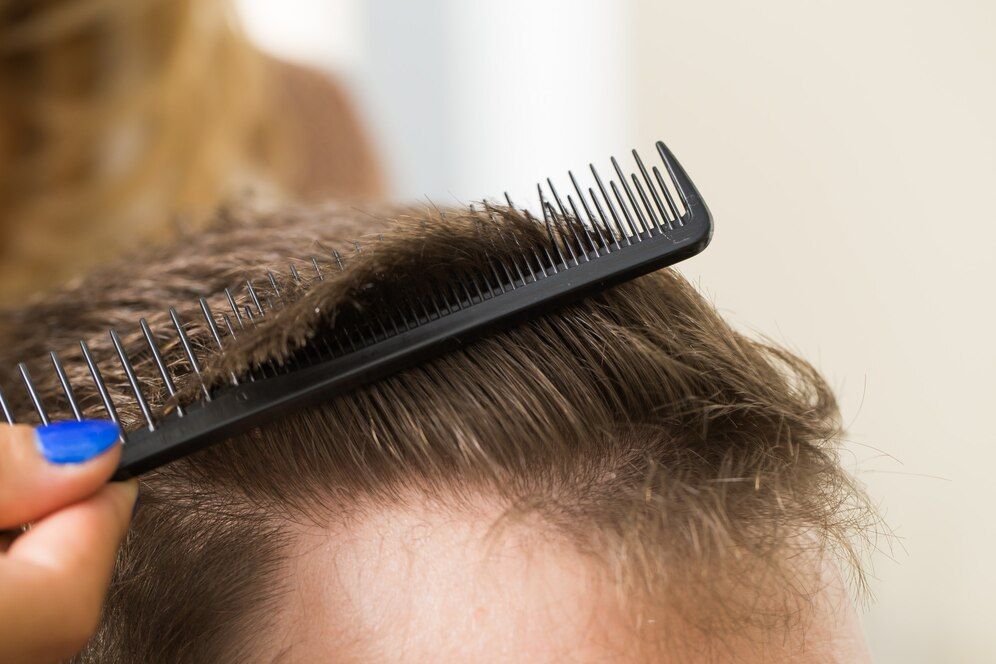Dec 20
/
Skillmed Institute
The Evolution of Hair Restoration Techniques

Hair
restoration has undergone remarkable transformations in the past decade, driven
by innovations in medical technology, surgical methods, and aesthetic
principles. These advancements have reshaped the landscape of hair restoration,
offering improved patient outcomes, reduced recovery times, and more
natural-looking results.
Technological Milestones in Hair Restoration
One
of the most transformative developments has been the refinement of follicular unit extraction
(FUE). (1) Introduced as a less
invasive alternative to follicular unit transplantation (FUT), FUE has seen
significant improvements through robotic-assisted
systems such as ARTAS.
These systems enhance precision, minimize scarring, and allow for more consistent graft extraction.
Additionally, advancements in bioengineered hair grafts have gained momentum. Researchers have made progress in generating hair follicles through tissue engineering, promising a future where hair cloning could become a reality. This technique involves cultivating hair follicle cells in vitro before implanting them into the scalp, addressing severe hair loss cases that were previously untreatable.
These systems enhance precision, minimize scarring, and allow for more consistent graft extraction.
Additionally, advancements in bioengineered hair grafts have gained momentum. Researchers have made progress in generating hair follicles through tissue engineering, promising a future where hair cloning could become a reality. This technique involves cultivating hair follicle cells in vitro before implanting them into the scalp, addressing severe hair loss cases that were previously untreatable.
Refinement of Surgical Techniques
Alongside
technological improvements, surgical methodologies have evolved substantially.
The development of advanced graft harvesting tools has enabled surgeons to
extract larger numbers of viable follicles while preserving donor area
integrity.
Implanters like the Choi pen have revolutionized the implantation process, allowing for precise follicle placement and optimal hair density.
Microsurgical approaches have also enhanced the aesthetic outcomes of hair restoration. Surgeons now meticulously design hairlines using facial symmetry and age-appropriate patterns, ensuring results that appear natural even under close examination.
Implanters like the Choi pen have revolutionized the implantation process, allowing for precise follicle placement and optimal hair density.
Microsurgical approaches have also enhanced the aesthetic outcomes of hair restoration. Surgeons now meticulously design hairlines using facial symmetry and age-appropriate patterns, ensuring results that appear natural even under close examination.
Non-Surgical Innovations and Supportive Therapies
Non-surgical
approaches have gained prominence as supplementary treatments or standalone
options.
Low-level laser therapy (LLLT) has emerged as a scientifically validated method for stimulating hair growth by enhancing cellular activity within hair follicles.
Similarly, platelet-rich plasma (PRP) therapy, involving injections of concentrated platelets, has demonstrated effectiveness in promoting follicle health and prolonging the anagen (growth) phase of the hair cycle.
Stem cell-based therapies represent another promising frontier. Researchers aim to stimulate dormant hair follicles and encourage new growth by harnessing the regenerative potential of autologous stem cells.
Low-level laser therapy (LLLT) has emerged as a scientifically validated method for stimulating hair growth by enhancing cellular activity within hair follicles.
Similarly, platelet-rich plasma (PRP) therapy, involving injections of concentrated platelets, has demonstrated effectiveness in promoting follicle health and prolonging the anagen (growth) phase of the hair cycle.
Stem cell-based therapies represent another promising frontier. Researchers aim to stimulate dormant hair follicles and encourage new growth by harnessing the regenerative potential of autologous stem cells.
Impact on Patient Outcomes
Modern
hair restoration techniques offer superior aesthetic outcomes, reduced
procedural downtime, and lower complication rates. The psychological benefits
are equally profound; patients often report enhanced self-esteem and improved
quality of life post-treatment.
When designing customized intervention strategies, surgeons now consider a patient's hair type, degree of hair loss, and future hair loss potential. This personalized approach ensures higher patient satisfaction.
When designing customized intervention strategies, surgeons now consider a patient's hair type, degree of hair loss, and future hair loss potential. This personalized approach ensures higher patient satisfaction.
Ethical
and Future Considerations
Ensuring
equitable access to cutting-edge treatments will be a pressing concern as
procedures become more sophisticated.
The integration of artificial intelligence and big data analytics may further enhance diagnostic accuracy and treatment planning. Predictive modeling based on genetic and environmental factors could refine patient-specific interventions, ushering in an era of precision medicine in hair restoration.
The integration of artificial intelligence and big data analytics may further enhance diagnostic accuracy and treatment planning. Predictive modeling based on genetic and environmental factors could refine patient-specific interventions, ushering in an era of precision medicine in hair restoration.
Conclusion
The
past decade has marked an era of unprecedented progress in hair restoration
techniques. From technological innovations such as robotic FUE and
bioengineered hair grafts to refinements in surgical artistry and emerging
regenerative therapies, the field has evolved into a sophisticated specialty
with life-changing implications.
References
- Zito PM, Raggio BS. Hair Transplantation. In: StatPearls [Internet]. Treasure Island (FL): StatPearls Publishing; 2024 [cited 2024 Dec 14]. Available from: http://www.ncbi.nlm.nih.gov/books/NBK547740/
- Thuangtong R, Suthakorn J. Design, proof-of-concept of single robotic hair transplant mechanisms for both harvest and implant of hair grafts. Comput Struct Biotechnol J. 2023 Nov 30;24:31–45
- Abaci HE, Coffman A, Doucet Y, Chen J, Jacków J, Wang E, et al. Tissue engineering of human hair follicles using a biomimetic developmental approach. Nat Commun. 2018 Dec 13;9(1):5301
- Marwah MK, Mysore V. Recipient Area. J Cutan Aesthet Surg. 2018;11(4):202–10
- Paichitrojjana A, Paichitrojjana A. Platelet Rich Plasma and Its Use in Hair Regrowth: A Review. Drug Des Devel Ther. 2022 Mar 10;16:635–45

Company
Need Help?
Recruitment
Made in Europe ©2024 Skillmed

